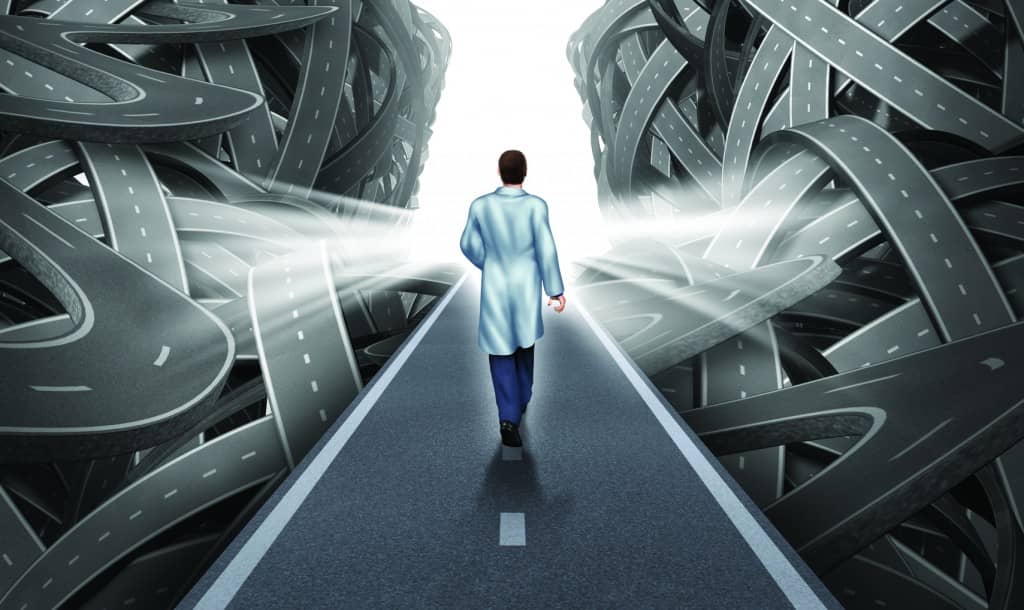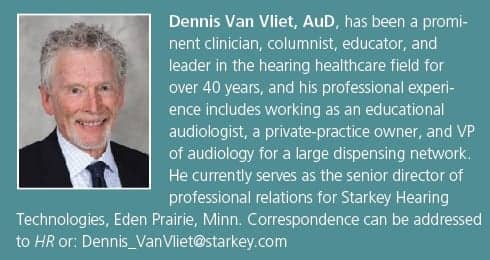Final Word | November 2016 Hearing Review
When a group of hearing care professionals are talking about our profession, a topic that often comes up is what things will look like in a few years. Everyone in the group typically has a few predictions. It is fun to look back on these predictions to see how right or wrong we were. I still remember clearly a group of my friends sitting around and having coffee 25 years ago. We were making predictions about fax machines, which were being used in banks and escrow offices. We predicted they’d soon be adopted by most businesses, but we couldn’t imagine ever needing or wanting one. Shortly thereafter, we found fax machines to be indispensable, even in healthcare. Two and a half decades later, fax machines have gone from must-haves to mostly obsolete annoyances. In this case, our predictions were both right and wrong!
This November, I will be celebrating another “Big O” birthday milestone. I plan to be writing this column for Hearing Review for at least another 5 years. It seems like a good time to forecast 5 years ahead, so we can go back in the archives after 5 years have passed to see how wrong or right I was about certain predictions. Here are my predictions for hearing healthcare over the next 5 years:
Disruption in the marketplace: This is probably better described as “change in the marketplace.” There will be an overlapping of consumer technology and traditional hearing aids. We see that today. As consumer devices become easier to use and wear, it doesn’t take much imagination to see where we will be in 5 years. We’ll have bio-monitoring, fitness tracking, and environmental sensors that monitor light, sound, temperature, and data like barometric information. I’m not sure what we’ll do with all of that, but we will certainly have options. Some of us will embrace the new complexity and capability, and some of us will want to keep things simpler.
Traditional practice as we know it: In the past 5 years, standards of care haven’t changed much, but we have seen a change in the way the general public perceives our value. As much as we try to reinforce the importance of service combined with product, the product continues to be the focus. As a first-world country, we believe in technology, and celebrate new and fancy gadgets. That will continue to work against us if we believe in traditional practice yet continue to overplay the importance of technology. The good news is that even though the technology may become easier to use in the next 5 years, it will be the consumers who really need us who will come in for help. Others may try the gadgets and realize they want smaller, more comfortable products and the services that go with them, and they also will come in. The engineers and tweakers might do fine without us, and that’s OK.
Ear impressions: We have been watching ear-scanning technology developments for about 5 years, and I can say I have personally seen well-fitted products made from optical scans. This technology has finally arrived. It will be up to the producers to make it affordable and practical. My prediction is that over the next 5 years the major manufacturers will agree to use scanned files, and practitioners will start to adopt scanning of ear canals as a routine practice. FedEx will lose some business, as the outbound scans will be sent electronically with the orders. There will also be some of us who won’t give up tradition and will stick with traditional impressions.
Batteries: They will be rechargeable and better than anything we have today.
Passwords: Memorizing tough-to-recall passwords will become obsolete. A secure system that recognizes unique biological characteristics to identify individuals will be in common practice…PLEASE!
Synaptopathy: The science of “hidden hearing loss” is just emerging now in humans (see Research on p 40). I think this will be an exciting time for us as we learn to identify the problem with differential diagnostic procedures and for development of appropriate treatment. We have seen people with relatively normal hearing thresholds who complain of not being able to understand speech in noise. These patients may have synaptopathy, or “hidden hearing loss” from noise exposure or other insults to the auditory system. As diagnostic procedures and treatment methods advance, we will be able to help a broader range of patients with hearing complaints.
Cochlear implants & implantable hearing devices: This technology will get better, and patients with better residual hearing will become candidates. Today, the cost is high, and reimbursements for the necessary supporting audiology professionals are limited. The practical success of the technology is largely dependent upon third-party reimbursement. All these factors contribute to what may not be sustainable. A better model that serves more patients will emerge.
The Final Word? We need to wait 5 years for the final word, but here is my prediction of how things will go down. I’ll be surprised that ear scanning is not yet common practice, and that battery technology is better, but not quite as good as I had predicted. I will still be frustrated with the need for passwords. I know that things will be different 5 years from now, I’m just hoping I’m correct in predicting that things will be better.
Original citation for this article: Van Vliet D. The Final Word: Van Vliet’s 5-year Predictions for Hearing Healthcare. Hearing Review. 2016;22(11):50.








While there is no doubt that big box stores pose a clear challenge to Independent clinics, it is always a good idea to live in the solution rather than dwell on the problem. Independent clinics have the opportunity right now to offer a superior experience to their patients using tools already at your disposal. Polls of some of the most successful clinics across North America clearly indicate that turning patients into advocates is the single best way not only to get return visits from very happy patients but also to expand your client base without the additional considerable expense of more advertising.
If you found Dr. Van Vliet’s article interesting, might I suggest a related paper in the same issue of the Hearing Review written by Chris McIntyre.
https://hearingreview.com/2016/10/clinical-benefits-patient-generated-health-data-2/
In five years, I think VA and Big Box outlets will control over 50% of the Hearing Instrument Market.